- 1-Importance-of-Teaching-Safe-Bouncing
- 2-Preparing-Preschoolers-for-Trampoline-Use
- 3-Step-by-Step-Safe-Bouncing-Techniques
- 4-Common-Safety-Rules-and-Supervision
- 5-Real-Life-Examples-and-Parental-Experience
1. Importance of Teaching Safe Bouncing
Teaching preschoolers how to bounce safely on trampolines is essential to prevent injuries and build their confidence. Young children are naturally curious and energetic, but without proper guidance, trampoline play can quickly lead to accidents.
Safe bouncing techniques not only protect children but also encourage healthy physical development and coordination. Establishing these habits early ensures children enjoy trampoline time while minimizing risks.
1.1 Understanding Preschoolers’ Physical Abilities
Preschool-aged children are still developing balance and motor skills, so their bouncing needs to be gentle and controlled. Recognizing these developmental stages helps caregivers tailor their teaching methods effectively.
2. Preparing Preschoolers for Trampoline Use
Before introducing bouncing, ensure the trampoline environment is safe and suitable for young children.
2.1 Choosing the Right Trampoline
Opt for trampolines designed specifically for preschoolers, with safety nets, padded edges, and appropriate size. Trampoline Zone offers a selection of child-friendly trampolines that meet rigorous safety standards.
2.2 Setting Expectations
Explain to children what is allowed on the trampoline and what isn’t. Clear, simple instructions help preschoolers understand the importance of safety.
3. Step-by-Step Safe Bouncing Techniques
Teaching safe bouncing involves demonstrating proper posture and controlled movements.
3.1 Starting Small
Begin with sitting or kneeling bounces to get children comfortable with the trampoline’s surface and motion.
3.2 Basic Bounce Practice
Encourage low, gentle bounces with feet together, keeping hands in front for balance. Show how to land softly to absorb impact.
3.3 Introducing Simple Movements
Once confident, guide preschoolers to try small jumps, teaching them to keep control and avoid risky tricks or flips.
4. Common Safety Rules and Supervision
Supervision and rules are vital to reinforce safe trampoline habits.
4.1 Always Supervise
Adults should closely watch children while they bounce to intervene if necessary and ensure rules are followed.
4.2 Limit Number of Jumpers
Allow only one child at a time to reduce collisions and accidents.
4.3 Safety Gear and Environment
Use safety nets, soft flooring around the trampoline, and ensure no hard objects are nearby.
5. Real-Life Examples and Parental Experience
Many parents have successfully taught their preschoolers to bounce safely by combining patience, clear communication, and consistent supervision.
5.1 A Mom’s Story
One mother shared how she gradually introduced her 4-year-old to trampoline play, starting with gentle bouncing lessons and praising careful landings. Over time, her child gained confidence and learned to enjoy the trampoline safely.
5.2 Expert Recommendations
Experts suggest integrating trampoline time into regular play routines, ensuring safety remains a top priority. For the best trampolines and accessories designed with children’s safety in mind, Trampoline Zone is a trusted resource.
Teaching preschoolers how to bounce safely is a rewarding process that blends fun with responsibility. With the right trampoline, guidance, and supervision, children can enjoy healthy, active play in a secure environment.



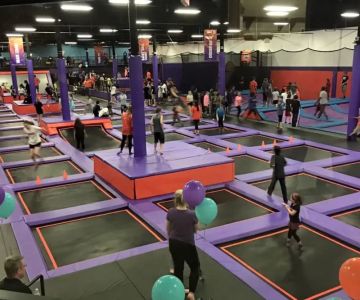
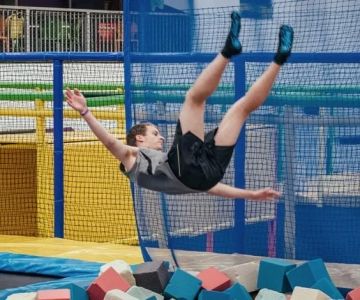
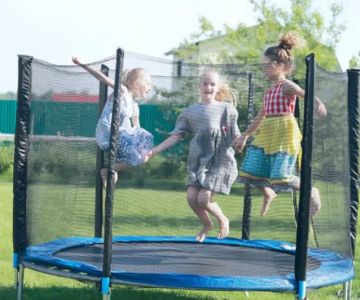

 Sky Zone Trampoline Park4.0 (541 reviews)
Sky Zone Trampoline Park4.0 (541 reviews) Launch Family Entertainment Park Norwood4.0 (730 reviews)
Launch Family Entertainment Park Norwood4.0 (730 reviews) Southern Ohio Gymnastics Academy ( SOGA )4.0 (40 reviews)
Southern Ohio Gymnastics Academy ( SOGA )4.0 (40 reviews) Jumpify2.0 (15 reviews)
Jumpify2.0 (15 reviews)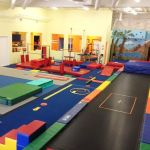 Jump! Gymnastics4.0 (102 reviews)
Jump! Gymnastics4.0 (102 reviews) Sky Zone Trampoline Park4.0 (248 reviews)
Sky Zone Trampoline Park4.0 (248 reviews) Are Trampoline Parks Safe for Kids? Essential Guide for U.S. Parents
Are Trampoline Parks Safe for Kids? Essential Guide for U.S. Parents How Often Should You Replace Trampoline Springs? Tips for Proper Maintenance
How Often Should You Replace Trampoline Springs? Tips for Proper Maintenance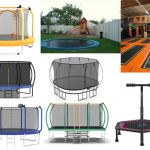 How Much Is a Trampoline? A Detailed Guide to Trampoline Costs and Buying Tips
How Much Is a Trampoline? A Detailed Guide to Trampoline Costs and Buying Tips Bounce Techniques for Stronger Legs: Effective Exercises and Tips
Bounce Techniques for Stronger Legs: Effective Exercises and Tips Essential Music Gear for Trampoline Dance: Complete Guide
Essential Music Gear for Trampoline Dance: Complete Guide Fun STEM Experiments Using Trampolines to Spark Curiosity and Learning
Fun STEM Experiments Using Trampolines to Spark Curiosity and Learning